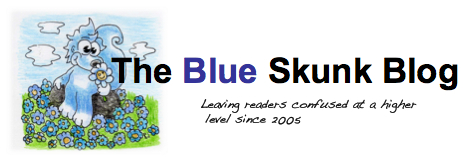"Once you are at cruise, there's nothing to do. ... You're not allowed to read; you're not allowed to, as we've learned, use laptops. You're not allowed to listen to music. ... you're supposed to sit in the seat, stay awake, and pay attention." Northwest Airlines pilot Jack Neis quoted in Nov 1, 2009 Minneapolis Star Tribune article (Could also be said by most students taking a F2F classes.)
 Whenever the topic of students using technology in school comes up, observations of how distracting technology can be almost always follow.
Whenever the topic of students using technology in school comes up, observations of how distracting technology can be almost always follow.
In response to a recent post, a number of readers suggested that the problem with access to YouTube by students is not inappropriate content, but that the resource is a distraction - like Facebook, game sites, and a host of other sites kids find a good deal more interesting than, say, the Crimean War or square roots or past participles.
The ability to distract has also put the use of laptops, netbooks, cell phones, PDAs, and iPod/mp3 players on the banned list in many schools. "Those dang kids are just listening to the filthy lyrics of rap music on their iPods instead of my lecture," pretty much summarizes the argument.
And you know what? I agree that technology can be a distraction - from my own experiences both as an instructor and as a student, as a meeting chair and as a meeting attendee.
I find it discouraging, to say the least, when a participant in one of my "enthralling" workshops starts texting or banging out something on the keyboard instead of hanging on each brilliant nugget of wisdom emanating from the front of the room. But then, I've found reading my RSS feeds more interesting than more than one keynote or meeting myself. (And I've felt like a dope when asked a question and it's obvious that I'd not been listening to the conversation.)
What, if anything, can be done about the distracting quality of technology?
The quick answer usually put forward by those not actually in the classroom or leading meetings is to simply offer a more engaging F2F experience. More discussion. More hands-on activities. Better slide shows. More relevant content. And I agree with this approach. Most of us can, indeed, create a more interactive learning experience. But this is something that is far easier espoused, than done.
Education, as we know it, still involves delivering content to some degree. Curricula still include topics that need to be mastered that rank pretty low on the relevance scale (and is all content relevant to all learners?) And quite frankly, lots of teachers have never experienced a high engagement classroom or workshop nor been taught how to conduct one.
Another easy answer is to simply "let the chips fall where they may." If kids (or meeting attendees) tune out to focus in on their Facebook page, well, let the natural consequences of such actions happen. And what might this tell us when students who listen with only one ear do better than those who give us our full attention. (Ever have kids who are absent from class a lot do better on tests than those who attended every class? I have.)
I don't have a good answer here. But I do know that trying to keep technologies out of the classroom and library is an unwinnable strategy. These devices are getting smaller, cheaper, more powerful and more an extension of our students' brains everyday. There is a steady movement to unblock the YouTubes and Facebooks and game sites in our libraries and labs. And it would be cruel and unusual punishment to sent many adults to meetings without their iPhones or Blackberries.
How do we deal with the distractive qualities of technology in schools?
 Sunday, November 1, 2009 at 01:23PM
Sunday, November 1, 2009 at 01:23PM 









